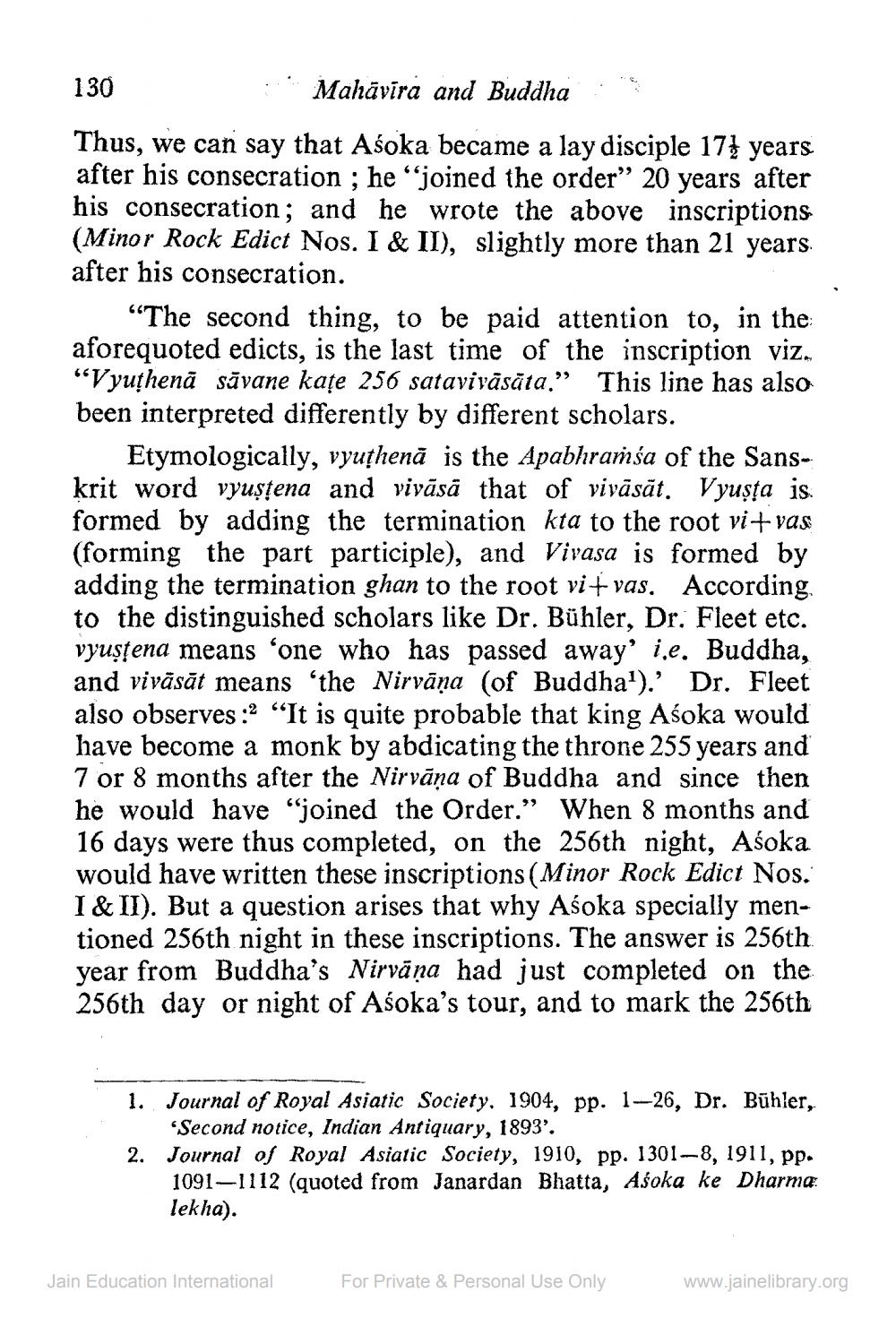________________
130
3. Mahāvīra and Buddha
Thus, we can say that Asoka became a lay disciple 17} years after his consecration ; he joined the order” 20 years after his consecration; and he wrote the above inscriptions (Minor Rock Edict Nos. I & II), slightly more than 21 years after his consecration.
"The second thing, to be paid attention to, in the aforequoted edicts, is the last time of the inscription viz. "Vyuthenā sāvane kațe 256 satavivāsāta.” This line has also been interpreted differently by different scholars.
Etymologically, vyuthenă is the Apabhramśa of the Sanskrit word vyuştena and vivāsā that of vivāsāt. Vyuşta is formed by adding the termination kta to the root vitvas (forming the part participle), and Vivasa is formed by adding the termination ghan to the root viť vas. According to the distinguished scholars like Dr. Bühler, Dr. Fleet etc. vyuştena means 'one who has passed away' i.e. Buddha, and vivāsāt means 'the Nirvāņa (of Buddha').' Dr. Fleet also observes: “It is quite probable that king Asoka would have become a monk by abdicating the throne 255 years and 7 or 8 months after the Nirvana of Buddha and since then he would have “joined the Order.” When 8 months and 16 days were thus completed, on the 256th night, Asoka would have written these inscriptions (Minor Rock Edict Nos. I&II). But a question arises that why Aśoka specially mentioned 256th night in these inscriptions. The answer is 256th year from Buddha's Nirvāṇa had just completed on the 256th day or night of Asoka's tour, and to mark the 256th
1. Journal of Royal Asiatic Society. 1904, pp. 1-26, Dr. Bühler,
"Second notice, Indian Antiquary, 1893'. 2. Journal of Royal Asiatic Society, 1910, pp. 1301-8, 1911, pp.
1091-1112 (quoted from Janardan Bhatta, Aśoka ke Dharma lekha).
Jain Education International
For Private & Personal Use Only
www.jainelibrary.org




